Introducing science experiments to young minds is an excellent way to spark their curiosity and foster a love for learning. The walking water experiment is a captivating and educational activity that demonstrates the movement of water through capillary action. In this blog post, we’ll guide you through the walking water experiment with step-by-step instructions and highlight the science behind it.
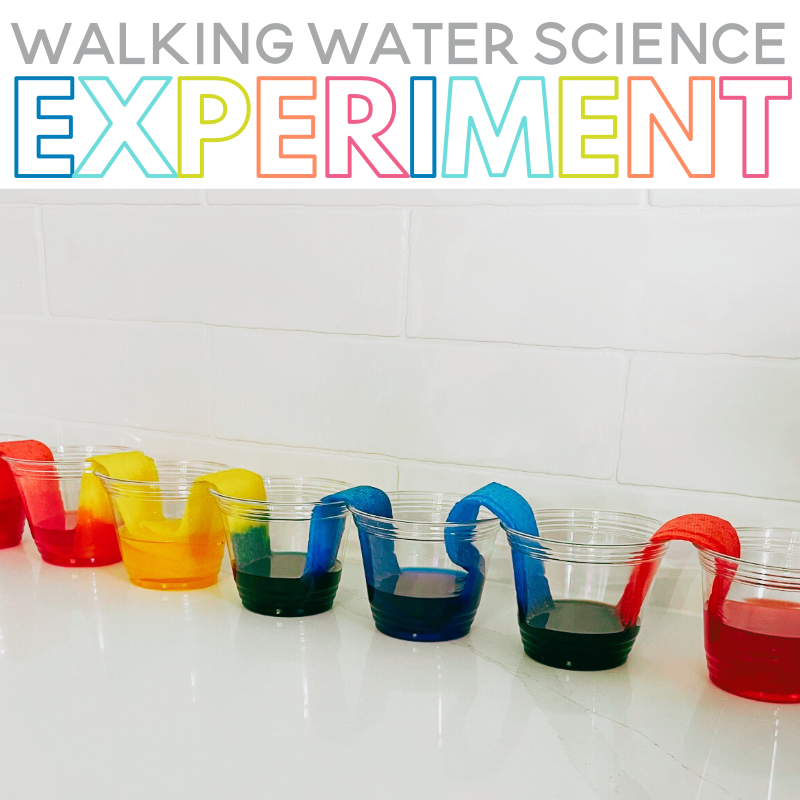
What Is the Walking Water Experiment?
The walking water experiment is a simple and visually stunning demonstration of how water travels from one container to another through a process called capillary action. Capillary action occurs when water molecules are attracted to the surface of certain materials, such as paper towels or coffee filters, and move upward and defy gravity.
This red, yellow, and blue food coloring creates a beautiful rainbow science activity that can also be used to discuss color mixing.
Rainbow Walking Water Experiment Supplies
To conduct the walking water science experiment, you will need the following materials:
- 7 clear cups or jars
- Water
- Food coloring (primary colors)
- Paper towels or coffee filters
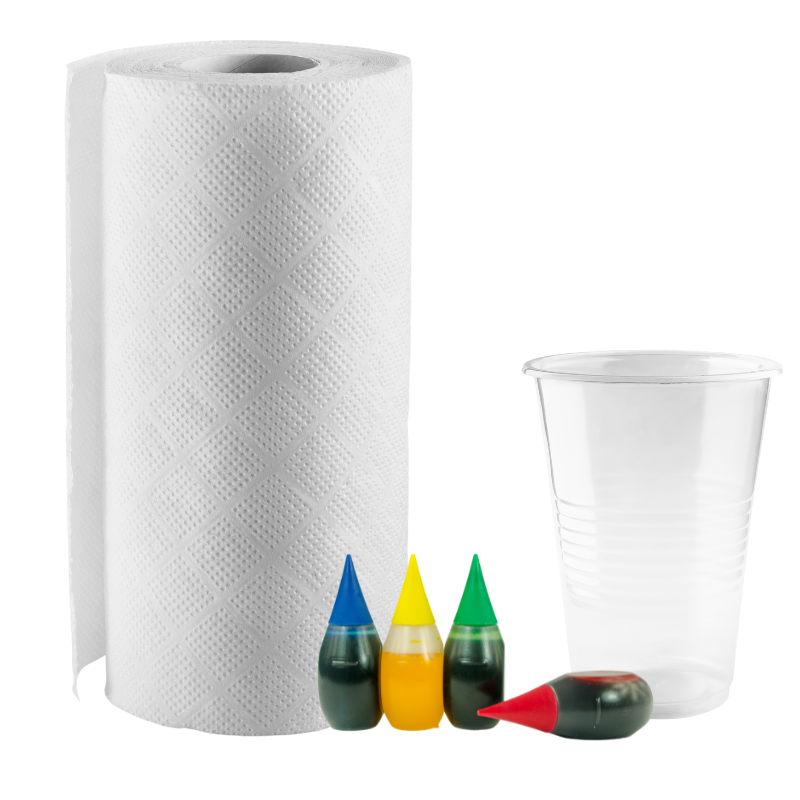
Cups
You will need 7 clear cups or jars for this science experiment. I recommend using clear plastic cups if you are doing this activity with children so you don’t have to worry about glass jars breaking.
Water
You will need water to fill some of the cups. I recommend having a plastic pitcher of water nearby or doing this rainbow paper towel experiment near the sink.
Food Coloring
You will need a few drops of different colors of food coloring for this experiment. Primary colors work best and can be purchased in the same food coloring package.
Food coloring is needed is many science experiments including, Magic Play Dough.
Paper Towels
You will need a few paper towels to fold for this activity. Six half sheets of paper towel is all you will need.
How to Make a Rainbow Walking Water Experiment
Fill Cups
First, count out 7 clear cups. Place the seven cups in a line with about an inch or two of space between them. Pour water into the 1st, 3rd, 5th, and 7th cup.
The cups should be about 3/4 full. The more water you put in the cups, the faster the experiment will work.
Add Food Coloring
Next, add a few drops of food coloring to a few of the cups. Add 5 drops of red food coloring to the 1st cup and the 7th cup. Add 5 drops of yellow food coloring to the 3rd cup. Add 5 drops of blue food coloring to the 5th cup.
Gel food coloring also works fine for this activity as well.
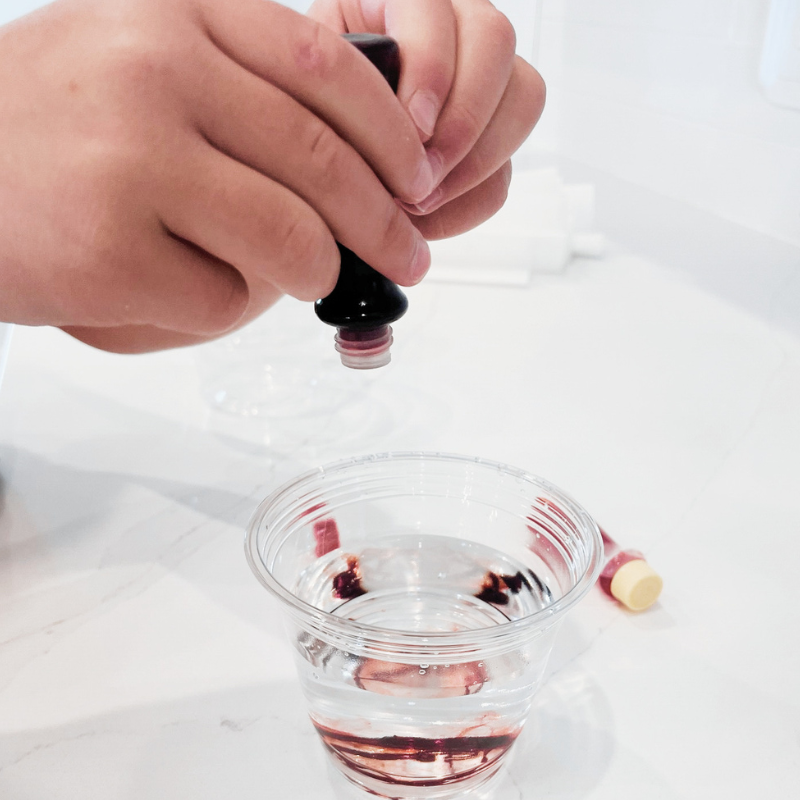
If you have left over food coloring be sure to check out this fun activity, How to Make Magic Play Dough.
Fold Paper Towels In Half
Take a half sheet of paper towel and fold it in half lengthwise and in half again lengthwise. Trim off excess paper towel so there isn’t too much excess paper towel sticking up in the air between the cups. You will need 6 of these paper towels.
Drape Paper Towels Between Cups
Using the paper towel that you just folded, drape it between the first and second cup. Continue this between all of the cups.
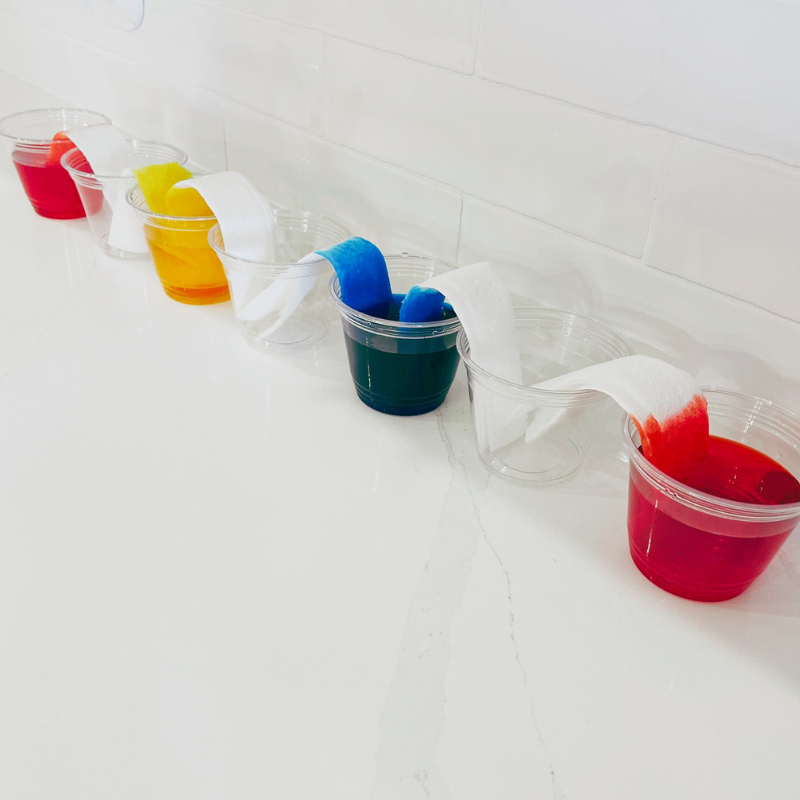
Watch the Water Move
The water and dye will quickly start to move up the paper towel into the empty cups. The blue and red will mix to make purple. The blue and yellow will mix to make green. The red and yellow will mix to make the orange.
Rainbow Lab Questions to Ask Kids
Here are a few questions to ask and discuss with children during the walking water science experiment:
What Do You Think Will Happen to the Water?
Ask students to make predictions about what they think will happen to the water when food coloring is added.
What Is Happening Now?
Next, add the paper towel strip to connect the cups. What is happening now? Is there water in each cup? What color is it?
Why Do You Think the Colors Are Changing?
Encourage students to share their observations and what they notice in the rainbow water experiment.
Why Might the Water Be Able to Move Up Against Gravity Like That?
Ask students to think about what they know about gravity and how that plays into this science experiment.
What other examples can you think of where this happens? Plants sucking up water at the roots is a great example of this in nature.
How Color Walking Works: The Science
The water in the walking water experiment can move up against gravity due to a special property called capillary action. Capillary action is the ability of a liquid, like water, to flow in narrow spaces or tubes, such as the fibers of a paper towel or coffee filter.
Water molecules are attracted to each other and to other substances, like the fibers of a paper towel. This attraction is called cohesion and adhesion. Cohesion makes water molecules stick to each other, forming a sort of “chain” or continuous column of water. Adhesion allows water molecules to stick to other substances, like the fibers of a paper towel.
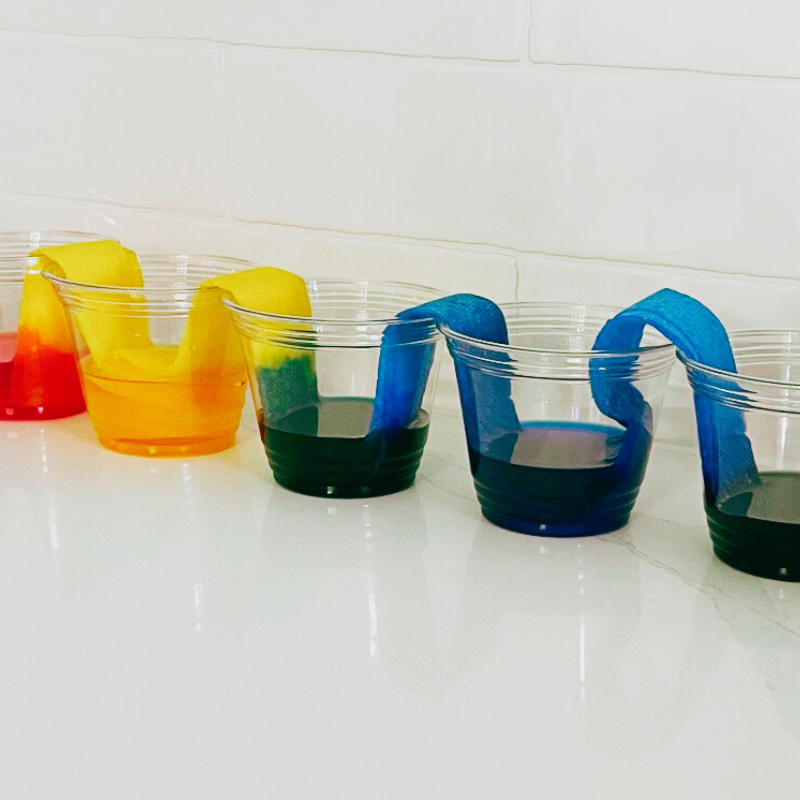
When you place one end of the paper towel in a cup of water and the other end in an empty cup, the water molecules start to climb up the paper towel through capillary action. The water molecules are attracted to the paper towel fibers, and they pull each other along, like a team working together. As the water molecules stick to the fibers and climb up, they create a flow or movement of water against gravity.
The narrow spaces between the fibers of the paper towel provide a path for the water to travel upwards. It’s similar to how a straw works: when you place one end of a straw in a liquid and suck on the other end, the liquid rises in the straw due to the same capillary action.
So, in the walking water experiment, the combination of cohesion, adhesion, and the narrow spaces in the paper towel allows the water to move up against gravity. The colored water mixes as it moves, creating a beautiful walking water rainbow!
Walking Water Experiment Worksheet
Making observations is an important skill for kids and science experiments are a great way to practice. This simple worksheet was designed for kids of all ages to draw and color what they see.
Kids will simply draw a before and after picture of the cups, colors and paper towels. You can download this simple walking water worksheet and use it with your students.

Water Walking Rainbow Experiment FAQ
How Long Does It Take for the Walking Water Science Experiment to Work?
In the walking water experiment, the time it takes for the water to move from one cup to another can vary depending on several factors. Here are a few factors that can influence the time it takes for the water to move:
1. Distance: The distance between the cups can affect the time it takes for the water to travel. If the cups are closer together, the water may move more quickly. If the cups are further apart, it may take a bit longer for the water to reach the other cup.
2. Paper towel absorbency: The absorbency of the paper towel or coffee filter used can impact the speed of water movement. Different brands or types of paper towels may have varying levels of absorbency, which can affect how quickly the water travels. More absorbent paper towels work best.
3. Water quantity: The amount of water in the cups can also influence the time it takes for the water to move. If there is a larger volume of water in the starting cup, it may take longer for it to travel to the empty cup.
On average, you might start to see the water movement and colors mixing within a few minutes of setting up the experiment. However, complete water transfer from one cup to another may take anywhere from 30 minutes to a couple of hours, depending on the factors mentioned above.
If you are doing this experiment in a classroom setting, I recommend setting it up in the morning and following up with it at the end of the day.
Remember, the walking water experiment is not a fast-paced activity but rather a gradual process. It’s an opportunity to observe and learn about capillary action and the movement of water through absorbent materials. So, be patient and set a timer to follow up on the experiment.
How Can I Adapt This Experiment for Different Age Groups?
This fun walking water experiment can be adapted for children of different ages.
This experiment works well for younger students learning about colors and how colors mix. You can use this free printable worksheet for children to draw the walking water science experiment and write the colors that they see!
Older students can explore variations of the walking water science experiment. They can test different materials, such as fabric or sponge, to see if capillary action occurs in the same way. They can also experiment with the distance between the glasses or the angle at which the paper towels are placed to observe how these factors affect the movement of water.
What Properties of Water Are Evident in the Traveling Water Experiment?
Water is made up of tiny, tiny particles called molecules. These molecules love to stick together and climb up the paper towel, just like climbing a ladder. They move from one fiber to another in a process called capillary action.
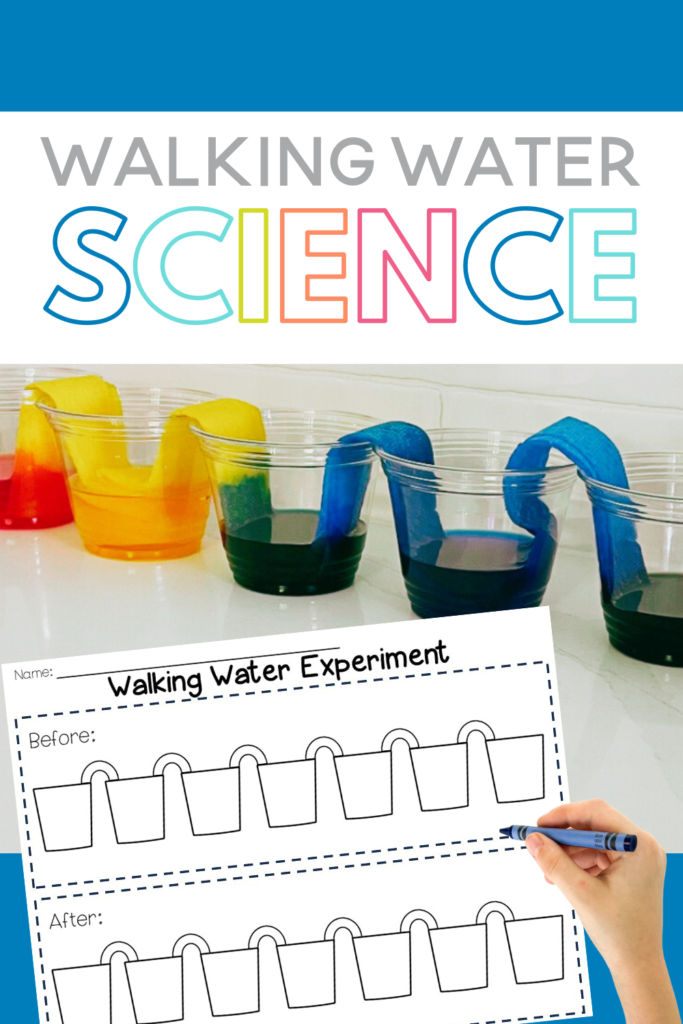
Rainbow Water Experiments for Kids: The Bottom Line
The walking water experiment provides a fun and meaningful hands-on experience for young scientists to witness capillary action and learn about color mixing and the properties of water. Kids will love this easy science experiment!
Give this walking water experiment a try with your students and don’t forget to print the free printable worksheet!
